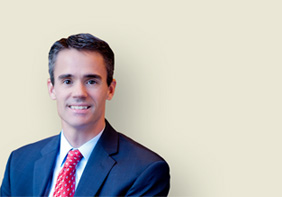How To Actually Do Long Term
My wife Vicki and I happily celebrated 20 years of marriage this Spring. As an advisor, my discussions with clients often revolve around categorizing goals as “short-term” and “long-term”; I’m pretty sure 20 years would be in that Long-Term bucket… (and to many of you reading this, 20 years is nothing!)
If you would’ve asked us 20 years ago how those years would play out exactly, we could only tell you something like “comfortable home in a safe neighborhood, a few kids…” and, well maybe that’s it?
Because just like with investing, we can’t know all the details upfront, can we?
The ups and downs of life and raising children, the trials and the tests, the joys, celebrations, and growth… we can’t see it all ahead of time.
I know it sounds obvious, but the same is true with long-term planning/investing.
I was recently thinking about this because of an article written by Morgan Housel (author of “The Psychology of Money“) that I thought was worth sharing. In his blog post he uncovers some of the “how to” aspects of thinking long-term:
“Long-term thinking is easier to believe in than accomplish.
Most people know it’s the right strategy in investing, careers, relationships – anything that compounds. But saying “I’m in it for the long run” is a bit like standing at the base of Mt. Everest, pointing to the top, and saying, “That’s where I’m heading.” Well, that’s nice. Now comes the test.
Long term is harder than most people imagine, which is why it’s more lucrative than many people assume. Everything worthwhile has a price, and the prices aren’t always obvious. The real price of long term – the skills required, the mentality needed – is easy to minimize, often summarized with simple phrases like “be more patient,” as if that explains why so many people can’t.”
Well said (and thought-provoking), isn’t it? If you want to read the full (brief) post, you can do so by clicking here. In case you don’t have the time, here are a few more takeaways that I think could be helpful reminders for you as you consider your own long-term retirement/investment plan:
- “The long run is just a collection of short runs you have to put up with. …the question becomes how can you endure a never ending parade of nonsense.”
- “The few (very few) things that never change are candidates for long-term thinking. Everything else has a shelf life.”
- “The more flexibility you have the less you need to know what happens next.”
What comes to mind for you as you read these?
Whether you need a partner to help you to endure the “never ending parade” of things that come at us, or to identify your most important life goals to protect, I hope these are helpful reminders. The planning, I believe, is what gives us the flexibility to endure whatever comes our way.

Posted by:
Pete Dixon, CFP®
Partner and Advisor










